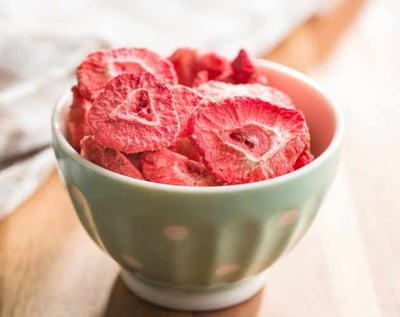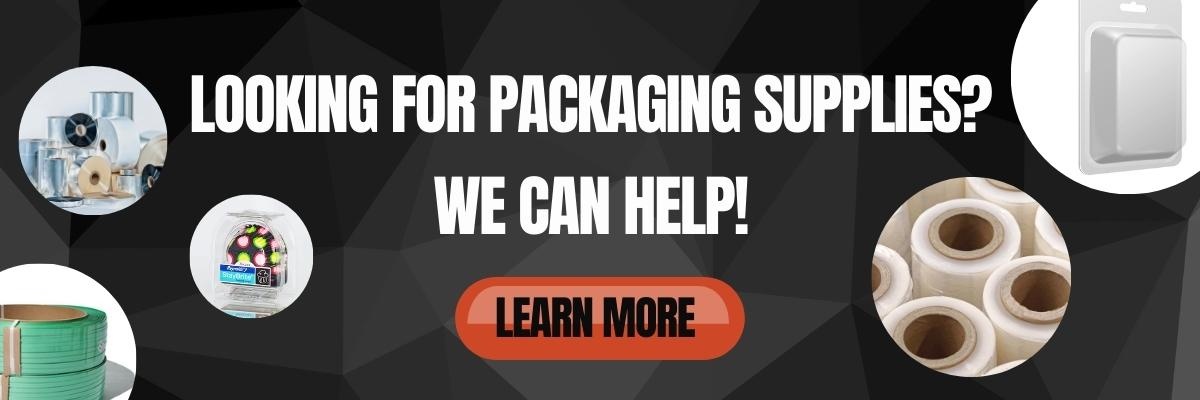What Is Freeze Drying And Freeze Dried Food Packaging?
Are you curious about freeze-dried food packaging and the process of freeze-drying food? You are not alone. Many people are looking into both of these topics.
The COVID-19 pandemic has skyrocketed consumer demand for shelf-stable foods. And according to recent reports, this trend is here to stay. With consumers shifting their focus to non-perishables, we can also expect freeze-dried foods to become more and more popular.
If you’re just learning about freeze-dried foods to stockpile, you’re probably wondering, “what is freeze-drying food?” You may also be looking for information on freeze-dried food packaging.
In this article, we will explore the process of freeze-drying food and note some of the popular packaging supplies used for packaging this type of food.
What Is Freeze Drying?
Freeze drying, also called lyophilization, is a method of food dehydration. Dehydration is the removal of moisture from food, which inhibits spoilage and increases shelf life. Traditional dehydration involves some level of heat. Freeze-drying, on the other hand, is done under cold temperatures.
It is widely believed that freeze-drying is the best method of drying. That’s because the use of low temperatures helps preserve the nutrients, beneficial compounds, color, texture, and flavor of food. The only downside is that it’s expensive. That’s why this dehydration method was limited to the production of foods for astronauts, sports food, and specialty foods.
But things are starting to change. Freeze-dried fruits and vegetables are now in many convenience foods. Many instant drinks are made using freeze-dried ingredients. Companies like Empire Freezing & Drying are even offering freeze-dried liquid foods and other freeze-drying services.
How Does Freeze-Drying Work in Food Processing?
Now you know what freeze-drying is, but how does freeze-drying work? Well, freeze-drying relies on a process called sublimation. Sublimation is transforming free water in food from a solid state (ice) into a gas state (water vapor) without going through a liquid state.
As you can imagine, this process is quite complicated, and it is carried out in three phases:
-
Freezing
Freezing is the most critical phase in freeze-drying. Food is frozen below its triple point, which is the temperature at which a substance's three phases (gas, liquid, and solid) can co-exist. This is usually done under atmospheric pressure.
-
Sublimation
Also called the primary drying phase, sublimation is done by lowering the pressure and adding just enough heat to cause the water to sublimate. Producers use a partial vacuum to control pressure, which also speeds up sublimation.
-
Absorption
The freeze-dried process of food dehydration ends with adsorption, also called the secondary drying phase. This phase removes unfrozen water molecules (IE: bound water) by further increasing the temperature, usually just above 32°F (0°C).
Which Foods Can Be Freeze-Dried?
Plant-based foods are the most commonly freeze-dried, but virtually anything can undergo this dehydration process. Examples of food items you can now find in their freeze-dried form include:
- Fruits and vegetables
- Grains and legumes
- Meats, seafood, and eggs
- Coffee, tea, and juice
- Liquid sweeteners and spices
- Whole frozen meals
More specific examples of freeze-dried foods are strawberries, bananas, instant coffee, milk, maple syrup, chili con carne, and Pad Thai.
Looking for freeze-dried food packaging supplies like shrink film and skin packaging? Look no further!
Freeze-Dried Food Packaging
When properly stored and packaged, freeze-dried foods can last 15 to 25 years. Want to know how to store freeze-dried food and how to package freeze-dried food to avoid unnecessary food waste? Make sure your items are kept in an environment that is:
Cool: Temperatures below 70°F (21°C) are less likely to deteriorate dried food.
Dry: Humid environments are known to speed up food spoilage and promote microbial growth.
Oxygen-free: Freeze-dried food is highly porous, which makes it prone to oxidation and degradation of bioactive compounds.
Dark: Some vitamins and certain antioxidants degrade when exposed to sunlight, so keep your freeze-dried foods away from direct light.
Some types of frozen food packaging and packaging materials can help create this type of favorable environment. Shrink wrap packaging uses heat to wrap around products and helps protect them from oxygen and humidity. Skin packaging is just as good in keeping perishable and shelf-stable food usable for longer.
Freeze-Dried Food Packaging Summary
Freeze-drying is the future of food production, keeping foods shelf-stable and just as good as their fresh counterparts for decades. In our changing world facing countless challenges to food security, it makes perfect sense to turn to freeze-dried foods.
But to make your freeze-dried items last for as long as possible, you need to store and package them properly. This can mean keeping them in air-tight containers in the pantry or tightly wrapped in vacuum packaging.
Looking For Freeze-Dried Food Packaging Supplies?
Look no further if you are looking for freeze-dried food packaging supplies such as shrink film or skin packaging!
If you would like more information on shrink film and skin packaging, please contact one of our packaging experts. They will be able to answer any questions you have!
They will also be able to help you purchase shrink film and skin packaging for your needs while assisting you with the details of your purchase!
About Nathan Dube
As the Digital Marketing Specialist at Industrial Packaging, I am honored to create content for such a phenomenal company and work with one of the greatest teams in the Packaging Industry. Whether creating a video, writing blog posts or generating other pieces of content and multimedia, I am always excited to help educate and inspire our prospects and clients to reach their highest potential in regards to their packaging processes and needs.





